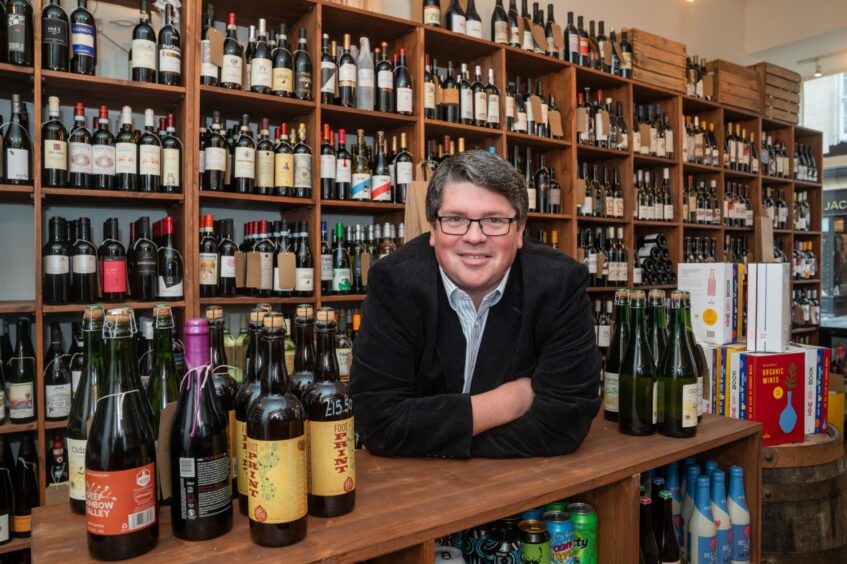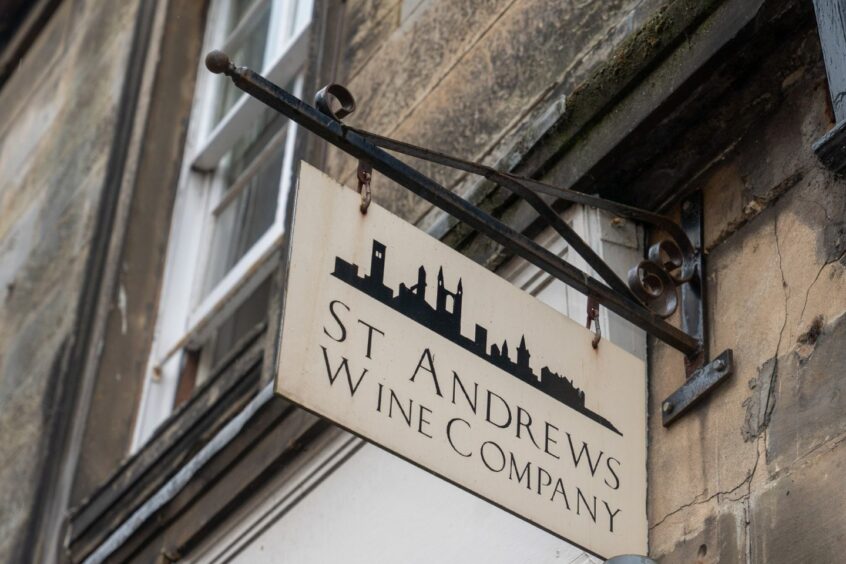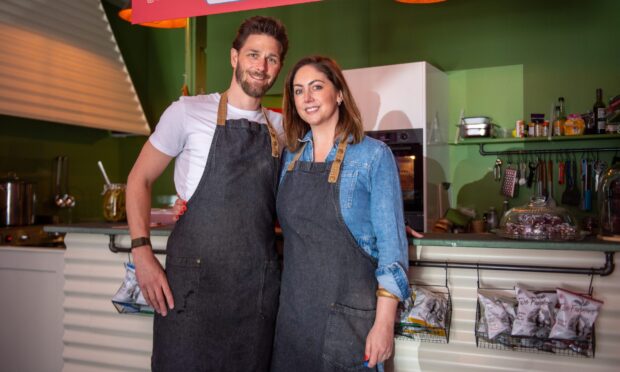A Fife wine shop owner fears it will be illegal for him to sell a third of his stock when the deposit return scheme comes into force in August.
Peter Wood, who opened St Andrews Wine Company a decade ago, says the Scottish Government will “decimate” the wine trade with the new deposit return scheme (DRS).
The new scheme, planned to come into force on August 16, will see a 20p charge added to cans and bottles which will be returned when they are recycled at a store or in a machine.
All drinks containers sold in Scotland will be included in the DRS, including bottles without barcodes. A third of St Andrews Wine Co’s current stock lack barcodes.
Mr Wood says he supports the introduction of the scheme, but not in its current form.
“It’s been so badly written and there’s been absolutely zero consultation, out from what we know, and we don’t know much,” he says.
“The Scottish Government views each drinks category the same, regardless of what it is and it’s not like that.
“It’s akin to a Rembrandt being compared to a guy spraying graffiti on a bridge. Are they art? Well, yes, but they’re very different things.
“It’s an ignorance from the Scottish Government as to what the wine trade is.”
Lack of barcodes causing confusion
The shop owner explains that wine producers often don’t include barcodes on bottles because the product is different each year.
Different vintages could have different prices, and the process of registering each wine separately is too long and costly.
Circularity Scotland (CS) – approved by the Scottish Government as the scheme’s administrator in 2021 – states “if you import drinks into the UK, you are viewed as a producer and have certain legal obligations under the DRS regulations.”
Mr Wood buys stock from both UK and foreign countries, and says he struggles to understand who is responsible for making sure bottles are barcoded and registered within the scheme.
“From what I’ve gathered, an importer in Wales has to register with CS if he wants to put products onto the Scottish market,” he says.
“Each of the products needs an individual barcode, he must pay a producer charge and charge me the 20p deposit.
“But another big problem is, we’ve not been told about this. We’re a licensed business and very visible from a governmental perspective, but the government has not sent any communication to me to tell me what my responsibilities are.
“So if I’ve not been told, can you imagine how importers in England or Wales feel?
“They’re finding out from me and the press that they’ve got three weeks worth of working days to get registered.”
What’s the solution?
The shop owner says a possible solution would be to create one importer’s barcode for glass bottles. But the issue remains that each bottle would have to be labelled by hand in a HMRC bonded warehouse.
Another solution he suggests is not including glass in the DRS, like Norway and Germany have opted for.
His third suggestion is making the registration mandatory for retailers and not importers. This means each retailer prints a monthly report of how many bottles have been sold and returns the 20p deposits to the scheme.
But first, he wants a delay in introducing the scheme to avoid harming his and other small businesses.
Mr Wood added: “My entire business model will be decimated by this. Suppliers will pull out and producers will pull out of the Scottish market meaning less choice for the consumer.
“For my business, a third of my products go. The things that make this business unique disappear overnight on August 16.
“I suspect I’d survive, but my unique selling point that has made this shop such a joy for so many people will disappear.”
Complex situation with bottle return scheme
Chief executive of CS David Harris says the company has been actively working with industry, government and all stakeholders to deliver a scheme that will work for small producers and retailers in particular.
He highlights that drinks producers and importers need to register with the DRS regulator, the Scottish Environment Protection Agency, by February 28 to continue selling bottled or canned drinks in Scotland after August 16.
Mr Harris says: “We recognise the complexities involved in the scheme when it comes to scheme articles being purchased outside of Scotland.
“We continue to engage closely with businesses across Scotland to help them prepare for the introduction of the scheme.
“If they haven’t already, we would urge producers to contact us on 0141 401 0899 or via our contact form so that we can support them in getting ready for DRS.”
A Scottish Government spokesperson said: “Glass is specifically included because of the significant benefits to our climate and to help reduce litter.
“Similar schemes that include glass are common in other European countries and have been shown to be very effective.
“Administration of the scheme is being led by Circularity Scotland Ltd, which is a private non-profit company that was set up by producers, retailers and wholesalers and is working closely with businesses on roll-out of the scheme.
“Any business concerned about being able to meet their producer obligations is encouraged to contact Circularity Scotland for advice and guidance.”













